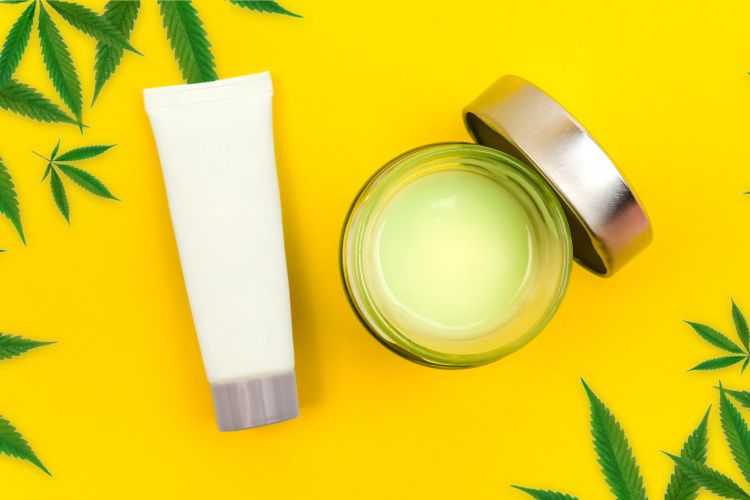Is CBD legal in cosmetics?
What is FDA’s stance on CBD in cosmetics?
Photo © AdobeStock.com/MysteryShot

Search Sephora’s online catalogue for “CBD” and you’ll be directed to a selection of no fewer than 32 skincare products, 14 bath and body items, four fragrances, and two haircare SKUs.
That’s quite a selection, and the international beauty emporium wouldn’t have invested the effort or money to curate it were it not witnessing current—and anticipating future—demand for such products. And indeed, a 2019 Grand View Research report1 predicts that the global CBD skincare market will hit $1.7 billion by 2025, representing a CAGR of 32.9%.
But while topical CBD skincare and beauty products may be popular, are they even legal, as far as FDA is concerned? And regardless, do beauty brands know what it takes to navigate this changing cosmetic-formulation landscape?
Cosmetic Purposes
First: Does FDA permit the use in skincare products and cosmetics of hemp-derived cannabidiol, or CBD, the wildly popular non-psychoactive cannabinoid that’s revolutionizing the health and personal-care spaces?
Before answering, we may first want to back up and ask: What does FDA even consider a “cosmetic” in the first place?
The answer lies in Section 201(i) of the Federal Food, Drug, and Cosmetic Act (FD&C Act), which defines cosmetics as “articles intended to be rubbed, poured, sprinkled, or sprayed on, introduced into, or otherwise applied to the human body...for cleansing, beautifying, promoting attractiveness, or altering the appearance.”
And that means that dermal moisturizers, nail polishes, lipsticks, eye creams, foundations, perfumes, hair colors, serums—even deodorants—all qualify, as do any substances that wind up as components of them.
Topical CBD? A-OK
And increasingly, CBD is just such a substance. “There are lots of companies out there wanting to sell topical product with CBD and hemp,” says Justin J. Prochnow, shareholder, Greenberg Traurig LLP (Denver).
And per FDA’s stance, “There’s no prohibition on using CBD or hemp in cosmetics,” he says. “While FDA has indicated that ingestible products like food, beverages, and supplements may not contain CBD or hemp with CBD, it hasn’t taken the same position for topical products.”
The reason: The exclusionary clause of the FD&C Act that the agency relies on for determining CBD’s impermissibility as an ingredient in ingestible products does not apply to topicals like cosmetics.
Small Claims
But that doesn’t give skincare and cosmetic brands free reign to make and market CBD products however they wish. While FDA enforces no prohibition on using CBD or hemp in cosmetics, any products thus formulated must still be safe and bear only those claims that FDA deems permissible.
“The problem for many companies is that the range of permissible claims for cosmetic and personal-care products is narrow,” Prochnow notes. Brands may market and sell only nondrug products intended to cleanse, beautify, promote attractiveness, or otherwise alter the skin’s appearance, he says—and none of those benefits appear to be attributable to CBD or hemp.
The upshot: “Companies really can’t make any claims regarding hemp or CBD in cosmetic products other than to claim the amount that’s in there,” Prochnow says. “Any claims related to pain, inflammation, anxiety, stress, or sleep—the common benefit claims made for CBD and hemp—are outside the scope of permissible claims and could cause the products to be regulated as drugs.”
Blowback
Alas, he sees companies not only pushing the boundaries of permissible claims but “blowing right by” them, as well.
In the personal-care sector and wherever else CBD appears, “There are lots of products marketing and touting CBD and hemp for the treatment of pain, anxiety, stress, and sleeplessness,” Prochnow concedes.
“But FDA has taken little action except in cases where companies are making express claims,” he continues. “Basically, it’s been an issue of claims going beyond the cleansing, promoting attractiveness, and beautifying bounds of cosmetics.”
Looking forward, he doesn’t foresee the agency’s low-key stance tightening. “Again, short of safety issues or express disease claims, there’s minimal risk of action right now,” he wagers.
Taking Action
Chalk it up to FDA’s limited resources and seemingly unlimited responsibilities. And frankly, Prochnow observes, “Not a lot of those resources get directed toward cosmetics. There are no GMPs required for cosmetics—although some are in the works—and unless FDA finds safety issues or express disease claims, like curing skin cancer, agency action is typically somewhat limited.”
So, the winning formula for CBD-curious skincare brands is to keep claims in check: note how many milligrams are in the container and leave it at that, Prochnow says. And with individual states drafting CBD labeling requirements of their own, he adds, “Right now, violating those is the bigger risk than any FDA action.”
As is violating the labeling requirements of Sephora—for in February, the retailer announced2 that it was enforcing first-in-the-industry transparency and quality standards on the CBD products it sells.
Those products must meet the Clean at Sephora rule, which requires, among other things, that CBD products prove they contain domestically grown, full- or broad-spectrum CBD and undergo third-party testing. Sephora also requires a certificate of analysis for its CBD products.
They likely won’t be the first beauty retailer to take such action. Maybe someday FDA will follow suit.
References
- Grand View Research newswire. “CBD Skin Care Market Size Worth $1.7 Billion by 2025 | CAGR: 32.9%: Grand View Research, Inc.” Published on August 29, 2019. Accessed at: https://www.prnewswire.com/news-releases/cbd-skin-care-market-size-worth-1-7-billion-by-2025--cagr-32-9-grand-view-research-inc-300908941.html#:~:text=CBD%20based%20skin%20care%20oils,to%20its%20anti%2Dinflammatory%20properties.
- Loreto M. “Sephora Creates CBD standards for products.” Chicago Tribune. Published on February 28, 2020. Accessed at: https://www.chicagotribune.com/marijuana/sns-tft-sephora-cbd-standards-20200228-txx3nvrbgzc7bidpbegvxradom-story.html

Prinova acquires Aplinova to further increase its footprint in Latin America
April 7th 2025Prinova has recently announced the acquisition of Brazilian ingredients distributor Aplinova, which is a provider of specialty ingredients for a range of market segments that include food, beverage, supplements, and personal care.

























